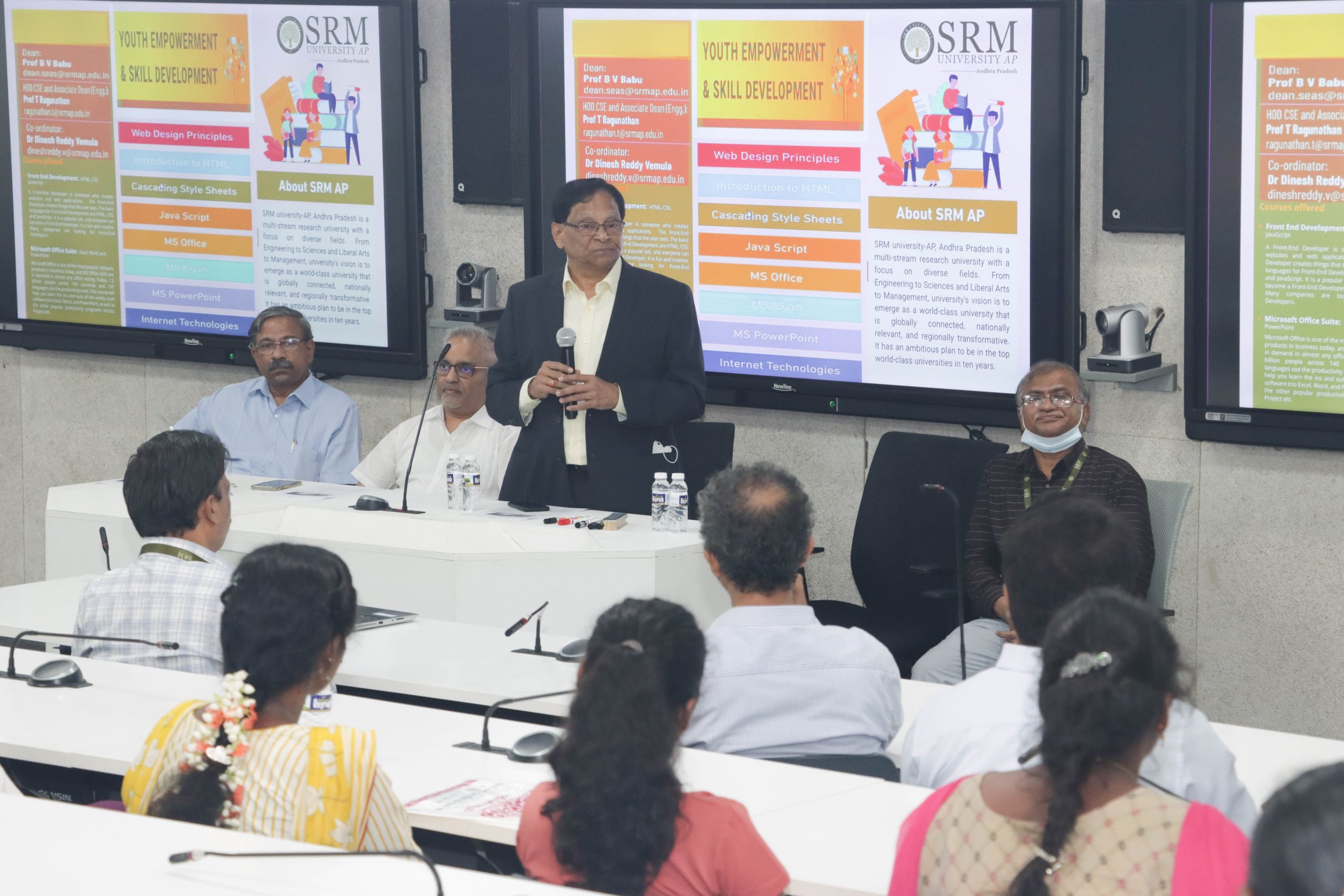Recent News
- Security concerns in digital image transmission over the internet September 13, 2022
 The research team from the Department of Computer Science and Engineering proposes a research scheme to address security concerns in the transmission of digital images of aerial Remote sensing images over the Internet. Assistant Professor Dr Priyanka, Assistant Professor Dr Jatindra Kumar Dash, research scholar Ms K Jyothsna Devi, and BTech student Mr. M V Jayanth Krishna, published the paper A New Robust and Secure 3-Level Digital Image Watermarking Based on G-BAT Hybrid Optimization in the Mathematics Journal SCI, a Q1 Journal with an Impact Factor of 2.9. The research project combats various threats in the transmission of Remote sensing images, such as copyright protection, copy control, and unauthorized access.
The research team from the Department of Computer Science and Engineering proposes a research scheme to address security concerns in the transmission of digital images of aerial Remote sensing images over the Internet. Assistant Professor Dr Priyanka, Assistant Professor Dr Jatindra Kumar Dash, research scholar Ms K Jyothsna Devi, and BTech student Mr. M V Jayanth Krishna, published the paper A New Robust and Secure 3-Level Digital Image Watermarking Based on G-BAT Hybrid Optimization in the Mathematics Journal SCI, a Q1 Journal with an Impact Factor of 2.9. The research project combats various threats in the transmission of Remote sensing images, such as copyright protection, copy control, and unauthorized access.Abstract
This contribution applies tools from the information theory and soft computing (SC) paradigms to the embedding and extraction of watermarks in aerial remote sensing (RS) images to protect copyright. By the time 5G came along, Internet usage had already grown exponentially. Regarding copyright protection, the most important responsibility of the digital image watermarking (DIW) approach is to provide authentication and security for digital content. The main goal of the paper is to provide authentication and security to aerial RS images transmitted over the Internet by the proposal of a hybrid approach using both the redundant discrete wavelet transform (RDWT) and the singular value decomposition (SVD) schemes for DIW. Specifically, SC is adopted in this work for the numerical optimisation of critical parameters. Moreover, 1-level RDWT and SVD are applied to digital cover images and singular matrices of LH and HL sub-bands are selected for watermark embedding. Further selected singular matrices S LH and S HL are split into 3 × 3 non-overlapping blocks, and diagonal positions are used for watermark embedding. Three-level symmetric encryption with a low computational cost is used to ensure higher watermark security. A hybrid grasshopper–BAT (G- BAT) SC-based optimization algorithm is also proposed to achieve high-quality DIW outcomes, and a broad comparison against other methods in the state-of-the-art is provided. The experimental results have demonstrated that the proposal provides high levels of imperceptibility, robustness, embedding capacity, and security when dealing with DIW of aerial RS images, even higher than the state-of-the-art methods.
The proposed scheme is easily dumped into the sender and receiver machines to work readily. MATLAB platform is the only requirement. Researchers aspire to design new image watermarking schemes using machine learning and deep learning techniques. For this project, they have collaborated with Professor José Santamaría from the Department of Computer Science, University of Jaén, and Professor Antonio Romero-Manchado from the Department of Cartographic Engineering, Geodesy, and Photogrammetry, University of Jaén.
Continue reading → - SRM AP begins the youth empowerment and skill development programme August 30, 2022

The Department of Computer Science and Engineering at SRM University-AP commenced a one-month-long programme on “Youth Empowerment and Skill Development” with its inaugural ceremony on August 29, 2022. The programme, organised under the ISR activities of the university, is an exclusive initiative for young people living in the vicinal rural communities to enhance and develop their technical and computing skills that will augment their possibilities for a better livelihood.
At the inaugural function, Prof T Ragunathan, Associate Dean- SEAS & the Head of the Department welcomed the gathering. He expressed the university’s objective in conducting the programme and how it would create far-reaching implications in the personal and professional development of the rural youth. Honourable Vice-Chancellor Prof VS Rao delivered the inaugural address and appreciated such dedicated and active initiatives aiming at the holistic welfare of society. “Equitable development of the society should be the vision of the modern education, enabling the young generation of this country to grow into the greatest wealth of our nation”, he remarked.
Prof BV Babu, Dean-SEAS presided over and emphasised the necessity of facilitating and preparing the youth to face the challenges of a technology-driven world. Digital literacy and computer awareness have become the inevitability of present times, causing a marked shift in the operations of the secondary and tertiary sectors. Registrar Dr R Premkumar also addressed the gathering. An empowered youth with digital and computer expertise will keep the country’s future safe in their hands. The Programme coordinator Dr V Dinesh Reddy, Assistant Professor- Department of Computer Science and Engineering proposed the vote of thanks.
The programme received an overwhelming response from around fifteen neighbouring villages. As part of the workshop, courses will be offered on web designing and internet technologies such as Front-End Development and Microsoft Office Suite.. Students will be introduced to basic web designing principles, MS office, Javascript, HTML, etc. Classes will be held from August 29, 2022, to September 28, 2022, from 5.30 pm to 7.00 pm at the university premises.

